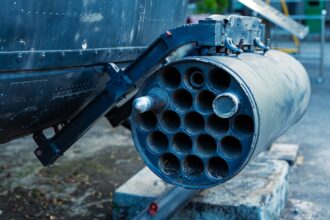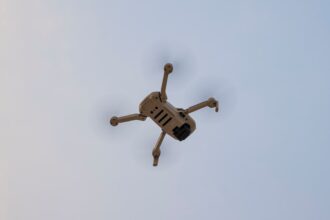Improvised Explosive Devices (IEDs) have emerged as one of the most significant threats in modern warfare and terrorism.
Their design allows for a wide range of configurations, making them adaptable to various operational environments.
The unpredictability of IEDs poses a unique challenge for military and law enforcement agencies, as they can be deployed in urban settings, rural areas, or even in crowded public spaces. The psychological impact of IED attacks is profound, instilling fear and uncertainty among civilians and security forces alike. The proliferation of IEDs has been fueled by advancements in technology and the accessibility of explosive materials.
Terrorist organizations and insurgent groups have increasingly turned to these devices as a means of asymmetric warfare, allowing them to inflict significant damage on more powerful adversaries. The ability to remotely detonate IEDs using mobile phones or other electronic devices has further complicated countermeasures, as it enables attackers to strike from a safe distance. Understanding the nature of the IED threat is crucial for developing effective strategies to mitigate its impact and protect both military personnel and civilians.
Key Takeaways
- IEDs pose a significant threat due to their ability to cause mass casualties and destruction.
- Countermeasure technology has evolved to include advanced detection systems and robotics for safer disposal.
- Advanced detection systems use various technologies such as X-ray, chemical sensors, and ground-penetrating radar to identify IEDs.
- Jamming and disabling techniques are used to neutralize IEDs remotely, reducing the risk to personnel.
- International collaboration and cooperation are essential for sharing intelligence and developing effective countermeasures.
Evolution of IED Countermeasure Technology
The evolution of IED countermeasure technology has been driven by the urgent need to address the growing threat posed by these devices. In the early days of counter-IED efforts, responses were largely reactive, focusing on detecting and neutralizing devices after they had been deployed. However, as the sophistication of IEDs increased, so too did the need for proactive measures.
This led to the development of advanced detection systems that utilize a combination of sensors, algorithms, and data analysis to identify potential threats before they can cause harm. Over the years, counter-IED technology has seen significant advancements, including the integration of artificial intelligence and machine learning. These technologies enable systems to analyze vast amounts of data in real-time, improving the accuracy and speed of threat detection.
Additionally, innovations in materials science have led to the creation of more durable and effective protective gear for personnel operating in high-risk environments. As the landscape of IED threats continues to evolve, so too must the technologies designed to counter them, ensuring that security forces remain one step ahead of potential attackers.
Advanced Detection Systems
Advanced detection systems play a pivotal role in countering the IED threat by providing early warning and identification capabilities. These systems employ a variety of technologies, including ground-penetrating radar, electromagnetic sensors, and chemical detectors, to locate hidden explosives. The integration of these diverse technologies allows for a comprehensive approach to threat detection, increasing the likelihood of identifying IEDs before they can be detonated.
Moreover, the use of unmanned aerial vehicles (UAVs) equipped with advanced sensors has revolutionized the way security forces conduct surveillance and reconnaissance missions. UAVs can cover large areas quickly and efficiently, providing real-time data that can be analyzed for potential threats. The ability to deploy these systems in high-risk environments reduces the risk to personnel while enhancing situational awareness.
As detection technologies continue to advance, they will play an increasingly critical role in safeguarding both military operations and civilian populations from the dangers posed by IEDs.
Jamming and Disabling Techniques
| Technique | Description | Effectiveness |
|---|---|---|
| Electromagnetic Jamming | Interferes with electronic signals using electromagnetic energy | High |
| GPS Spoofing | Falsifies GPS signals to deceive navigation systems | Medium |
| Radar Jamming | Disrupts radar signals to hide or confuse the presence of objects | High |
| Radio Frequency Jamming | Blocks communication by emitting interfering radio frequency signals | High |
Jamming and disabling techniques are essential components of an effective counter-IED strategy. These methods aim to disrupt the communication signals used to detonate remote-controlled IEDs, rendering them ineffective before they can be activated. Jamming devices can be deployed in various forms, from handheld units used by individual soldiers to larger systems mounted on vehicles or aircraft.
By creating a barrier that interferes with the signals used by attackers, these devices significantly reduce the risk of detonation. In addition to jamming, disabling techniques involve physically neutralizing IEDs through various means. This may include the use of specialized robots designed to safely approach and disarm explosive devices or employing controlled detonations to render them harmless.
The development of these techniques has been crucial in minimizing casualties among security forces and civilians alike. As technology continues to advance, new methods for jamming and disabling IEDs are likely to emerge, further enhancing the effectiveness of counter-IED operations.
Robotics and Unmanned Systems
The integration of robotics and unmanned systems into counter-IED operations has transformed the landscape of explosive device neutralization. These technologies allow for remote operation in high-risk environments, significantly reducing the risk to human life. Unmanned ground vehicles (UGVs) equipped with advanced sensors and robotic arms can be deployed to investigate suspicious objects or disarm IEDs without putting personnel in harm’s way.
Furthermore, unmanned aerial systems (UAS) provide an aerial perspective that enhances situational awareness during counter-IED missions. Equipped with high-resolution cameras and advanced imaging technology, UAS can identify potential threats from above while keeping operators at a safe distance. The versatility and adaptability of these systems make them invaluable tools in the ongoing fight against IEDs.
As robotics technology continues to advance, their role in counter-IED operations is expected to expand, offering new capabilities for detection, disarmament, and surveillance.
Blast Mitigation and Protection
Blast mitigation and protection are critical considerations in the design of counter-IED strategies. The destructive power of an IED explosion can cause significant damage not only to personnel but also to infrastructure and surrounding environments. As such, developing effective blast mitigation techniques is essential for minimizing casualties and preserving critical assets.
Innovations in materials science have led to the creation of blast-resistant barriers and protective gear designed to absorb or deflect explosive forces. These advancements have proven invaluable in military operations where personnel are exposed to potential IED threats. Additionally, architectural designs that incorporate blast-resistant features can help safeguard civilian structures from the devastating effects of explosions.
As research continues into blast mitigation technologies, it is likely that new solutions will emerge that further enhance protection against IED attacks.
Training and Education for IED Countermeasures
Training and education are fundamental components of any effective counter-IED strategy. Security forces must be equipped with the knowledge and skills necessary to recognize potential threats and respond appropriately in high-pressure situations. Comprehensive training programs that simulate real-world scenarios can help personnel develop critical decision-making abilities while familiarizing them with the latest detection technologies and disarming techniques.
Moreover, ongoing education is essential as new threats and technologies emerge. Regular updates on evolving tactics used by adversaries ensure that security forces remain prepared for any situation they may encounter. Collaboration with experts in fields such as engineering, explosives disposal, and intelligence analysis can further enhance training programs by providing insights into best practices and innovative approaches to countering IED threats.
Integration of Intelligence and Data Analysis
The integration of intelligence and data analysis into counter-IED operations is crucial for developing a comprehensive understanding of potential threats. By analyzing patterns in IED attacks, security forces can identify trends that may indicate future incidents or reveal insights into adversary tactics. This information can inform strategic planning and resource allocation, ensuring that efforts are focused on areas with the highest risk.
Advanced data analytics tools enable security agencies to process vast amounts of information quickly and efficiently. By leveraging machine learning algorithms, analysts can uncover hidden connections between seemingly unrelated data points, leading to more informed decision-making. The ability to integrate intelligence from multiple sources—such as surveillance footage, social media activity, and historical attack data—enhances situational awareness and improves response capabilities during counter-IED operations.
International Collaboration and Cooperation
International collaboration and cooperation are essential in addressing the global threat posed by IEDs.
Joint training exercises, intelligence-sharing agreements, and collaborative research initiatives can enhance the capabilities of security forces worldwide.
Organizations such as NATO and INTERPOL play a crucial role in facilitating international cooperation on counter-IED efforts. By fostering partnerships between nations, these organizations help create a unified approach to combating the IED threat. Additionally, engaging with non-governmental organizations (NGOs) and local communities can provide valuable insights into regional dynamics that may influence IED deployment tactics.
Future Trends in IED Countermeasure Technology
As technology continues to advance at an unprecedented pace, future trends in IED countermeasure technology are likely to focus on increased automation and integration. The development of autonomous systems capable of detecting and neutralizing IEDs without human intervention could revolutionize counter-IED operations. These systems would leverage artificial intelligence to analyze data in real-time, making split-second decisions based on evolving situations.
Moreover, advancements in nanotechnology may lead to the creation of new materials with enhanced properties for blast mitigation or detection capabilities. The integration of biometric sensors could also play a role in identifying individuals involved in IED attacks by analyzing physiological responses or behavioral patterns. As research continues into these emerging technologies, their potential applications in counter-IED efforts will likely expand.
Ethical and Legal Considerations in IED Defense
The ethical and legal considerations surrounding counter-IED operations are complex and multifaceted. As security forces adopt new technologies—such as drones or automated systems—questions arise regarding accountability and oversight. Ensuring that these technologies are used responsibly while minimizing collateral damage is paramount in maintaining public trust.
Additionally, legal frameworks governing the use of force must adapt to address the unique challenges posed by IED threats. Striking a balance between effective countermeasures and adherence to human rights standards is essential for maintaining legitimacy in counter-terrorism efforts. Engaging with legal experts and ethicists can help security agencies navigate these challenges while developing policies that uphold both security objectives and ethical principles.
In conclusion, addressing the IED threat requires a multifaceted approach that encompasses advanced technology, training, international collaboration, and ethical considerations. As security forces continue to adapt to evolving challenges posed by improvised explosive devices, ongoing innovation will be essential for safeguarding lives and maintaining stability in an increasingly complex world.
In recent years, advancements in IED countermeasure technology have become crucial for enhancing the safety of military personnel in conflict zones. A related article that delves into the latest innovations and strategies in this field can be found on the “In The War Room” website. This article provides an in-depth analysis of the cutting-edge technologies being developed to detect and neutralize improvised explosive devices effectively. For more detailed insights, you can read the full article by visiting In The War Room.
FAQs
What is IED countermeasure technology?
IED countermeasure technology refers to the various methods and technologies used to detect, neutralize, and mitigate the threat of improvised explosive devices (IEDs). These technologies are designed to protect military personnel, civilians, and infrastructure from the dangers posed by IEDs.
What are some examples of IED countermeasure technologies?
Examples of IED countermeasure technologies include electronic countermeasures, such as jamming devices and signal detectors, as well as physical barriers and blast-resistant materials. Other technologies include robotics for bomb disposal, explosive detection dogs, and advanced imaging systems for identifying IEDs.
How does IED countermeasure technology work?
IED countermeasure technology works by employing a combination of detection, disruption, and protection methods. Detection technologies can identify the presence of IEDs, while disruption technologies can neutralize or disable the explosive devices. Protection technologies aim to minimize the impact of IED explosions on personnel and infrastructure.
Why is IED countermeasure technology important?
IEDs pose a significant threat to military forces, law enforcement, and civilian populations around the world. IED countermeasure technology is important for safeguarding lives and infrastructure, as well as for maintaining security and stability in conflict zones and areas affected by terrorism.
What are the challenges associated with IED countermeasure technology?
Challenges associated with IED countermeasure technology include the constant evolution of IED tactics and technologies by adversaries, as well as the need for adaptable and versatile countermeasures. Additionally, the cost and complexity of implementing IED countermeasure technologies can present logistical and operational challenges.




